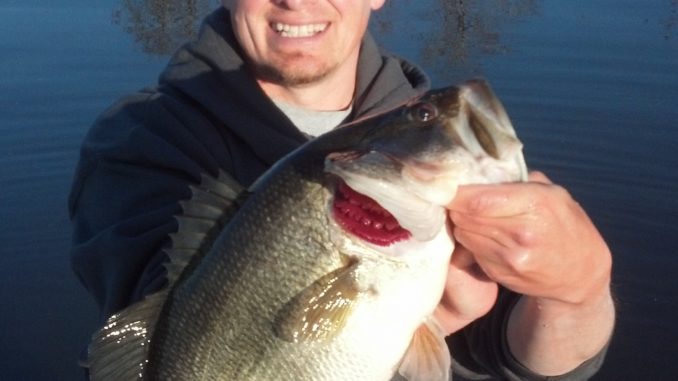
Largemouths will stage in deeper water around cover outside spawning areas
Despite the recent icy, cold weather, the season for big largemouth bass is upon anglers at Lake Marion. Guide Chris Heinning said, ready or not, February produces big bass, and they were already on the move just before the latest ice storm.
“The real news is that they’re still ready to make their move to the shallows, and if an angler is looking for a trophy largemouth, right now and for the next few weeks will be the best time of the year,” Henning said.
“I learned this lesson from some long-time guides on Lake Marion,” Henning said. “The key for these huge bass is many move to the shallows now and will be available in fishable depths and willing to bite. But many will be gone before some fishermen even get on the water to begin spring fishing.”
Heinning (803-236-1257) said that once the big move begins it will occur quickly at this time of year.
“The water is cold, but even a little warm weather will put the big-fish bite on,” he said. “This is an outstanding time to locate large bass that congregate in small transition areas. Now is the time a fisherman can catch two fish over eight pounds each on back-to-back casts. Savvy anglers will have caught their trophy before most anglers think about heading to lake.”
Heinning said the transition areas take many forms, but he looks for deeper water, specifically five to 15 feet deep, near a creek, ditch, channel or any deeper water that leads into the spawning shallows.
“I focus my fishing on the first available cover in three to seven feet of water, where bass will stage and ambush prey coming into shallows,” he said. “This deeper water can be located using a good topo map and marine electronics. For Lake Marion, I look for cypress trees, laydown logs, stumps, hyacinths, lily pads, bank reeds, rocks and docks as all good places.”
Heinning said the tackle he uses at this time of year is appropriate for the huge bass he seeks.
“I use heavy tackle for these big bass, and I recommend at least medium-heavy rods and reels with braided line or at least 15-pound fluorocarbon, and it’s better to go heavier than lighter if in doubt,” he said. “Soft-plastic lures are excellent, and I use those with less tail action in cold water and darker colors like black, brown and purples since water is very dingy. Normally, I’ll keep several rods rigged up with plastics, but as a minimum have one with a light weight 1/16-ounce Texas rig and another rod with heavier 3/8- to ¾-ounce to get into deeper cover.”





Be the first to comment